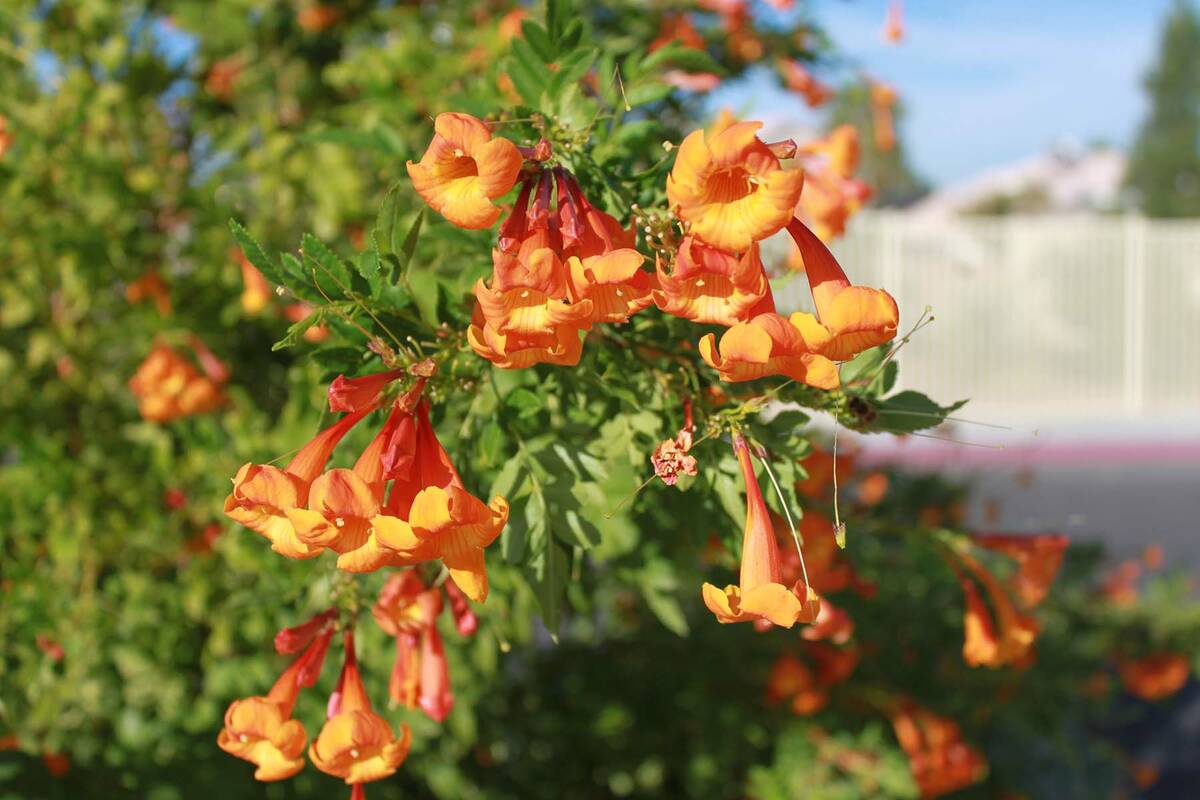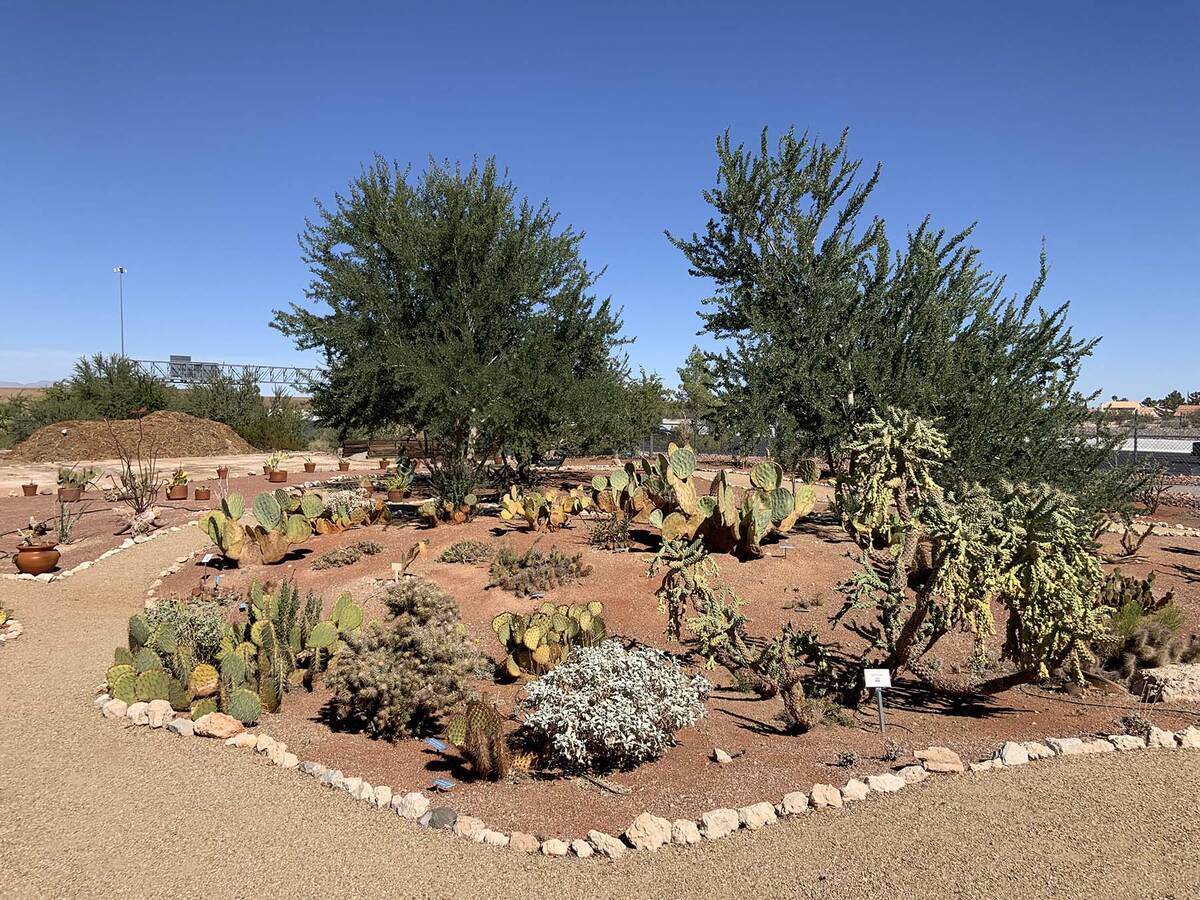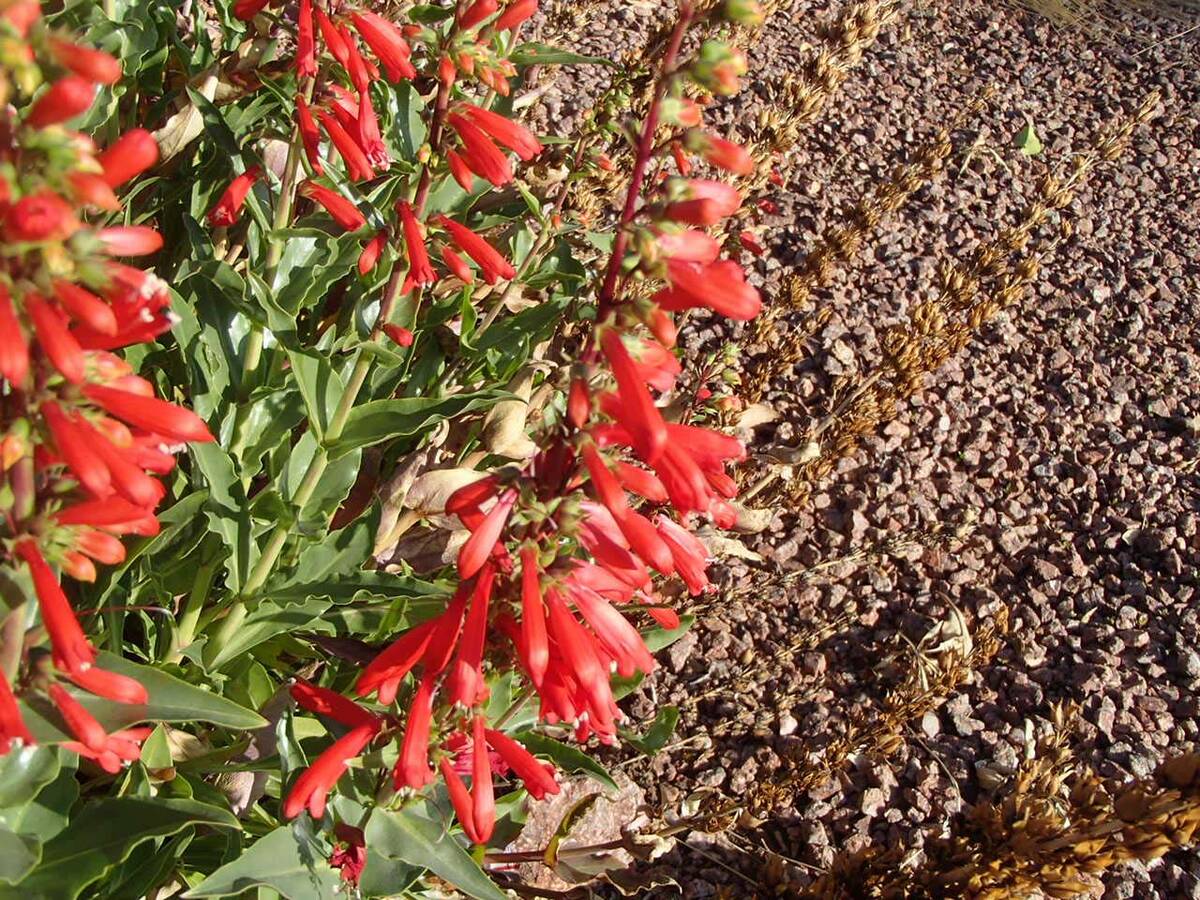Get landscape questions answered on gardens tours
Join the master gardener docents for guided tours of the beautiful and interesting University of Nevada, Reno Extension gardens (8050 Paradise Road at the corner of Windmill Lane) as well as its interior courtyard. There are lots of different plants to look and learn about. Learn which plants performed the best and why. Learn which plants use the least amount of water and, finally, where you can get them.
Tours are conducted two to three times a month from now until April. Register in advance on Eventbrite by typing in garden tour in the site’s search bar. Tours start mid-mornings and oftentimes last one and half hours.
The extension botanic gardens feature more than 1,500 species of plants, including many found nowhere else in the Las Vegas Valley. Docents lead attendees through highlights of the gardens and answer many different and tough questions about these plants and where you can get them.
Please wear comfortable walking shoes. Tours are fun, informal and full of exercise.
Q. What are your top plant recommendations for a desert xeriscape landscape?
A. There are many plants that fit the bill. Too many. I can make plant recommendations but the problem you may have is not finding them at local nurseries. When selecting plants to lower your landscape water use, use as few plants as possible and focus on plants in scale with the landscape and home. In other words, don’t select a 50-foot tree to do a 20-foot job. Big trees use more water than smaller trees.
All plants use water. Whenever a tree is planted you make a commitment that it will be watered and healthy. It can be difficult to judge plant water use but generally trees from deserts are capable of using less water than those that come from wetter regions. Knowing where the tree originates tells the buyer a lot. I’m surprised plant origin is not used more often when selecting plants.
When looking for plants for the Las Vegas area, focus on plants that withstand winter low temperatures of at least 20 F. These are usually trees and large shrubs used to provide shade for the home and outside sitting areas.
Q. Any suggestions for plants that like to live here, are low in maintenance, have no thorns and smell good?
A. Many plants that have all these features are smaller in size. You mention a sage that you like. Sages, in general, are good choices for desert landscapes. They supply seasonal color, smell good and have few have thorns. But be careful when choosing any old sage. Make sure your pick ranges into our deserts if it doesn’t originate here.
Another category of plants to consider are the desert penstemons. Not any old penstemons, but desert penstemons such as firecracker, Parry’s and Palmers penstemon. Penstemons as a group have a huge range. All tolerate dryness but not all of them have the same tolerance for desert heat and sun.
Desert verbenas are another good choice, such as varieties like Gooding, moss and sandpaper. Although the group called verbenas is not as big as the penstemon group of plants, it is large and rangy, and care should be used when selecting a verbena for a desert landscape.
Q. These are my first pomegranates. My pomegranate plant is a Utah Sweet variety and approximately 2 years old. The large fruit split and the seeds were not red but tasty. What can I do to improve next year’s crop? Can you give me some hints for fertilizer and watering that I can add?
A. I think your harvesting of the fruit is too late. Utah Sweet pomegranates are usually ready to harvest sometime in September depending on the weather. Pomegranates collectively are ready to harvest between September and November, but the exact timing depends on the variety.
The other observation I have is that Utah Sweet is not 100 percent red. It has red, pink and white in the arils (soft flesh plus the seed which may be soft or hard depending on the variety) and rind. The seed is considered soft or edible. The fruit is noticeably sweeter because it does not have the tannins that can make the juice taste bitter to some people.
One of the latest varieties to harvest is Wonderful, which is ready to harvest and the sweetest around Halloween. The Wonderful variety, besides being fully red inside and out when ripe, is what some people would consider “bitter” tasting because of its tannin content in the arils.
Fertilize all fruit trees including pomegranate once in February or March as new growth appears. Water them like other shrubs in the yard. They perform best when surrounded by wood chips and planted with compost.
Q. Can you tell me how high to prune back my rose bushes this next spring? Also, is it possible to transplant an older rose bush?
A. Roses or rose bushes come in lots of different sizes, varying from about 2 ½ feet tall to 6 feet tall or more. If you’ve just got a few of them, then you deadhead them (cut off spent flowers) when they finish blooming and prune them back in about January. How far to prune them back depends on the variety and the type of rose.
I would never prune them lower than about 18 inches from the ground because they may sucker from their rootstock. which is undesirable. But some of the varieties are tall and should be pruned taller during the winter. Most will be pruned in the 18-to-24-inch range.
Regarding moving your rose bushes or finding a new location, it is best if they are moved in early spring or fall but before they are three seasons in the ground. When moving them put them in the cooler east or north sides of walls or buildings. If you must plant near hot walls, then plant them in a location several feet away from hotter west- or south-facing walls. When moving plants, the tops should be cut back one-quarter to one-third of its height.
Roses don’t like to be in rock landscapes so putting them in rock-covered landscapes are a no-no. They perform better in landscapes covered with 2-3 inches of wood chips or with stuff that easily rots and enriches the soil.
Bob Morris is a horticulture expert and professor emeritus of the University of Nevada, Las Vegas. Visit his blog at xtremehorticulture.blogspot.com. Send questions to Extremehort@aol.com.












